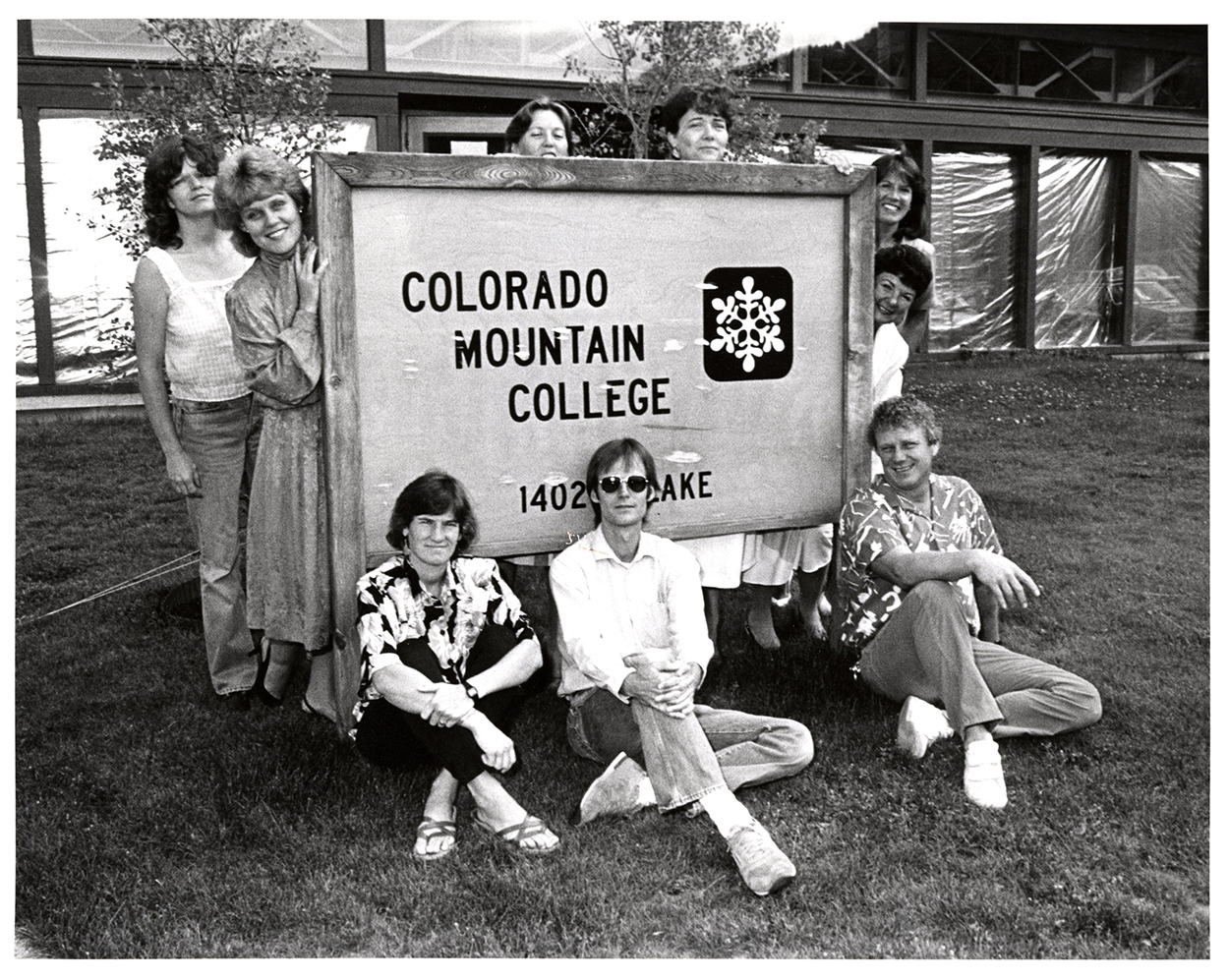Editor’s note: This story first ran in the May 7 edition of the Glenwood Springs Post-Independent. It is the fifth installment in a multi-part series celebrating Colorado Mountain College’s 50th anniversary.
CMC’s new Blake Ave. building becomes city’s ‘community center’

In its teenage years during the 1980s, Colorado Mountain College in Glenwood Springs experienced some significant growth spurts. It opened a new campus center, broadened its community outreach and catalyzed the growth of the arts.
CMC’s Glenwood Springs branch had outgrown its small space in the basement of the Hotel Colorado and was looking to consolidate its classes that by then were strewn all over town in rented office spaces. Just before the start of the decade, the college acquired the property at 14th and Blake, neighboring a horse pasture and a smaller City Market store.
At the Blake Avenue property, a new passive solar structure was envisioned – a perfect location to harness the power of the sun. Then-director of the CMC Glenwood Center Martha Cochran said, “We got a grant from the U.S. Department of Energy.” It was the largest passive solar grant awarded up to that time.
“[The Center] became an educational tool of how you could live differently,” she said. “You had solar curtains. You had mass to store heat. You had an atrium full of plants, so you had clean air.” As a living marker of the building’s age today, a 36-year-old, two-story-tall rubber tree towers above the registration desk.
The CMC Glenwood Center (now known as Colorado Mountain College Glenwood Springs) opened in the fall of 1981. Cochran noted that the building became a case study among solar architects, receiving visits from all over the world and several national awards for its design.
Doors swing open to new community needs

The new facility was a key component of expanding CMC’s service to its community in Glenwood Springs. People walked through the doors of the college for myriad reasons, not all of which involved taking classes.
Jan Shugart assumed leadership of the Glenwood Center in the mid-1980s. “We were a real community center,” she said. The new Glenwood Center was a magnet for everything happening both educationally and culturally. “It was the center of Glenwood…the nexus of the town,” said Shugart. It housed a preschool and a senior meal and transportation program, serving the needs of 3-year-olds and 93-year-olds alike.
The genesis for the Glenwood Springs Center for the Arts happened within the CMC Glenwood Center where the arts council founders held headquarters for more than 10 years. They built a children’s dance program (later known as Dancers Dancing) and held many community dance performances in the center’s multi-purpose room. Dance instructor Maurine Taufer said, “It could never have happened without CMC.”
Continuing education was still going strong; during the 1982-83 school year, over 4,000 Glenwood Springs area residents took part in personal interest classes and activities, from recreation to art and conversational foreign languages to popular psychology.
Individuals came to CMC in increasing numbers for job training and retraining. “CMC immersed itself in the community,” Shugart said. “We were there to offer any kind of education to help people keep jobs, maintain jobs and be able to find new jobs.” Workers displaced due to disability or economic changes found counselors to help them discover aptitudes and interests and develop skills.
“CMC promoted their employees to be involved with local committees and boards to ascertain what they thought were necessary trainings and education,” said Shugart. Businesses wanted customer service and supervisory skills workshops. The hospital needed more EMTs and additional training for medical professionals. Non-native English speakers and learners needed ESL classes.
The college responded to input from the community, finding teachers to fit the bill. “We were affordable, accessible and timely,” said Shugart.
During this era, the Glenwood Center as well as CMC in Carbondale became more closely aligned with the college’s residential site at Spring Valley, joining forces to form the Roaring Fork Campus. The merger made it possible to offer more core degree classes, taught by full-time faculty from Spring Valley as well as adjuncts. It created more opportunities in the communities for nontraditional-aged students to complete two-year degrees, which often meant offering classes at night for working adults and parents.
